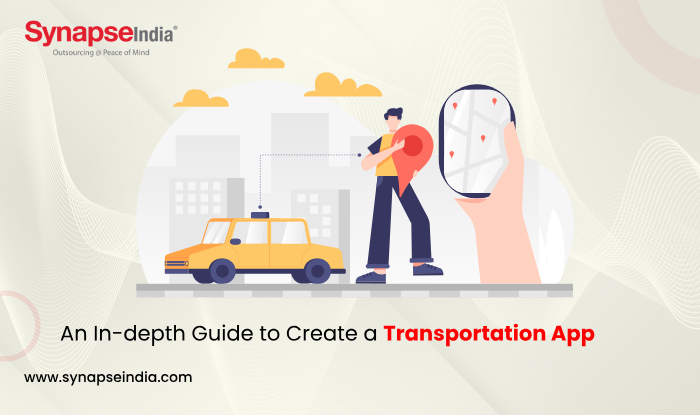 20 Feb 2024
20 Feb 2024
Mobile apps prove to be useful in many ways as they save time and effort for most businesses. Over the years mobile apps have been known for enhancing convenience, scalability, and affordability in businesses. These mobile applications allow users to get services quickly and help business owners earn their business more profits. In this large landscape of mobile applications category, we will focus on transportation apps in this blog. Logistics and transportation app development apps are a huge business that includes a large variety of business categories such as truck services, cab services, bus booking app services, and many more. These types of applications allow companies to effectively manage their business so they can process their business while increasing efficiency in operations.
The development of transportation and logistics apps holds immense significance in today's fast-paced world. These apps play a crucial role in streamlining operations, enhancing efficiency, and improving overall customer experience within the transportation app development and logistics industry.

Transportation and logistics apps facilitate real-time tracking of shipments, vehicle locations, and delivery status. This enables companies to optimize routes, reduce delivery times, and minimize operational costs.
With transportation apps, businesses and customers gain greater visibility into the entire supply chain process. They can track shipments from pickup to delivery, monitor inventory levels, and receive notifications about any delays or issues.
By providing customers with access to tracking information, delivery updates, and personalized notifications, transport app enhances the overall customer experience. Customers appreciate the transparency and convenience offered by these apps, leading to higher satisfaction and loyalty.
Transportation apps can also incorporate features for ensuring safety and compliance with regulations. This includes driver monitoring, vehicle maintenance reminders, and adherence to Transport App laws and regulations.
Logistics and transportation app development generate valuable data that can be analyzed to identify trends, optimize routes, and make informed business decisions. This data-driven approach enables companies to improve their operations and adapt to changing market demands continuously.
The development of transportation and logistics apps is instrumental in driving efficiency, visibility, and customer satisfaction within the industry. By leveraging technology to streamline processes and enhance communication, businesses can stay competitive and meet the evolving needs of the modern market.

Creating a transportation application involves several steps to ensure its functionality, usability, and success. Below is a step-by-step guide to help you create a transportation application:
Determine the purpose and goals of your transportation application. Consider what problems it will solve, who your target audience is, and what features you want to include.
Conduct thorough market research to understand the needs and preferences of your target audience. Identify competitors and analyze their strengths and weaknesses to differentiate your app.
Decide whether you want to develop a native app for iOS, Android, or both platforms or opt for a cross-platform solution like React Native or Flutter.
Create wireframes and mockups to visualize the layout and design of your app. Focus on creating an intuitive and user-friendly interface that enhances the user experience.
Build the backend infrastructure of your transportation app development, including servers, databases, APIs, and authentication systems. Ensure scalability, reliability, and security to support the app's functionality.
Develop the essential features of your transportation app, such as user registration, authentication, booking, tracking, payment processing, and notifications. Prioritize functionality that delivers value to users.
Integrate third-party services and APIs, such as mapping and geolocation services, payment gateways, and communication tools, to enhance the app's functionality and user experience.
Conduct comprehensive testing to identify and fix any bugs, errors, or usability issues. Perform functional testing, usability testing, and compatibility testing across different devices and platforms.
Prepare your transportation app for launch by optimizing its performance, security, and stability. Submit your app to the respective app stores (App Store for iOS, Google Play Store for Android) and follow their guidelines for approval.
Once your app is live, collect feedback from users and analyze app performance metrics. Use this feedback to improve, add new features, and iterate on the app to meet evolving user needs.
By following these steps and staying focused on user needs and preferences, you can create a successful transportation application that provides value to both users and businesses.
Creating a transportation app requires careful planning, execution, and continuous refinement to ensure its success in a competitive market. By following the comprehensive guide outlined above, you can look on a journey to develop a transportation app development that meets the needs of your target audience, delivers value, and enhances the overall user experience. Remember to prioritize user-centric design, robust backend infrastructure, and seamless integration of essential features. With thorough testing, thoughtful iteration based on user feedback, and a commitment to excellence, your transportation app has the potential to revolutionize the way people travel and commute in the modern world.

